Zucchini is a typical summer squash vegetable found in most gardens. Despite low maintenance, Zucchini can perish, and you would want to learn the causes and fix them.
If your Zucchini plant is dying, it could be due to overwatering, pests, diseases, lack of sunlight, or poor soil conditions. To fix this, improve the watering routine, give enough sunlight, use suitable soil and fertilize well, and monitor for pests and diseases.
Is your Zucchini dying? Then read this article till the end to discover all the reasons and learn quick fixes from adjusting watering to proper pest and disease management and bring your plant back to life.
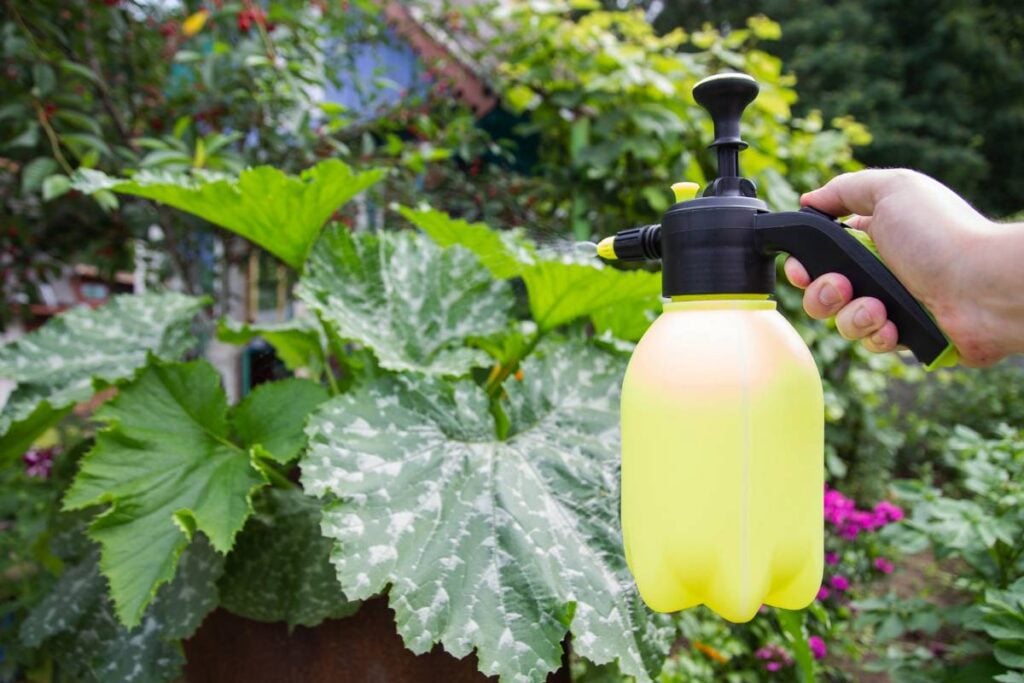
Zucchini plant dying due to Overwatering and Root rot
Every beginner, including me, has made this mistake once or twice.
Overwatering will suffocate the roots, for which they fail to pass the nutrients and moisture to the other parts.
Over time, the plant will die.
This is what I did as a beginner.
I never checked the soil before watering.
Instead, I followed a strict routine, like watering them 1-2 times weekly.
Ultimately, I ended up overwatering it.
Later, I saw the leaves yellowing, and the plant had stopped growing.
But thankfully, I have been able to save my plant because I understood the signs and took immediate action.
Zucchini plant overwatering symptoms
- Waterlogged plant
- Wilted leaves
- Yellow or brown leaves
- Premature drooping
- Foul smell from the plant base
Once you find these signs, you should immediately fix your water.
Ignorance will lead to the premature death of your plant.
Saving the dying Zucchini plant from overwatering
Check your soil to understand the moisture level.
If the soil feels wet, stop watering the plant for some time and let the top few inches of the soil dry.
Regularly check the soil and see if the plant is progressing.
If yes, the plant has been saved.
Saving the Zucchini plant from root rot
Prolonged overwatering and heavy rainfall can lead to root rot.
Fungi like Pythium and Phytophthora cause root rot by attacking the plant roots.
When Zucchini roots stay submerged in water for too long, they begin to decay, making them susceptible to fungal attacks.
Worm-like nematodes that live in the soil will begin eating your Zucchini roots.
Without healthy roots, your Zucchini will not survive and die.
If most of the roots have turned brown and mushy, it’s too late to save the plant.
If the damage is minimal, there is a chance of revival. For that:
- Take out your plant and check the roots. Remove the damaged roots, and apply some fungicide. Plant it back in a different location for safety.
- Add organic matter to the soil to improve drainage and fertility. This can provide your plant with energy to fight against the pathogens.
- Keep good care of the plant, especially the moisture. Always water the plant when the top few inches have dried.
- Skip chemical fertilizers for some weeks until the plant recovers.
- Ensure that the plant receives enough sunlight. Proper sunlight can dry up the soil and kill the pathogens, saving your plant.
Observe for some progress and development in the plant.
Once you witness this, your plant will be back.
Zucchini plant dying due to poor soil drainage
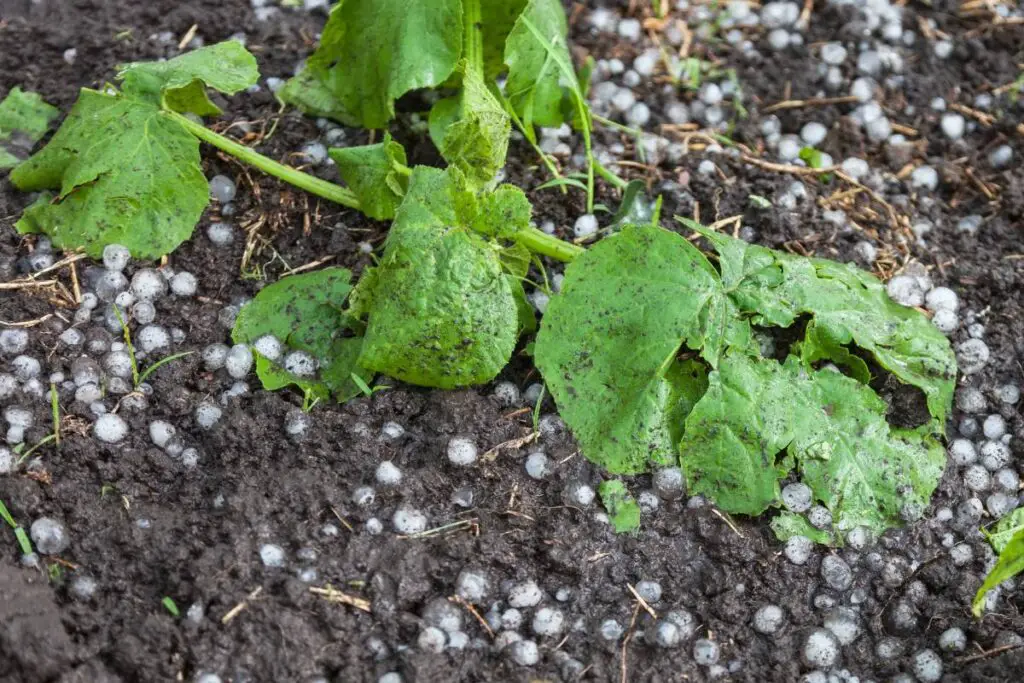
The soil is responsible if your Zucchini plant is dying.
The Zucchini plants will be yellowing, wilting, and dying.
Poor drainage, compact soil, and infertile soil can stress the plants in the long run and kill them.
Reviving a dying Zucchini plant from a drainage problem
To improve the drainage, add organic matter to it.
Please go through our Soil article, where we have discussed the correct soil recipes that can keep the Zucchini healthy in the long run.
For compaction, aerate the soil regularly using a chopstick or a fork.
Be careful not to harm the roots.
Your plant should start improving and revive back to its health.
Add organic matter to the soil before planting to prevent these issues.
It can improve soil fertility, drainage, and retention.
Zucchini plant dying due to pests and infestations
Several pests can attack your Zucchini plant and kill them.
Some feed on and skeletonize the leaves, while others suck the sap and weaken the plant.
Let’s see the common garden pests:
Squash Vine borers
Vine borers badly damage all squashes, including Zucchini.
Your healthy plant will suddenly die due to the infestation.
Vine borers are generally the larvae of a type of moth.
The adults are mistaken for wasps due to their dark-striped patterns and wasp-like shape.
They overwinter in the soil cocoons and emerge in late spring to lay eggs.
Once the larva comes out of the egg, it will start making tunnels into the stalk of the Zucchini plant.
You will notice tiny cylindrical holes surrounded by sawdust.
It signifies that the borer has already infested your plant.
Fortunately, there are ways to save your dying Zucchini plant.
But it won’t be easy:
- Remove the borer caterpillar using your hand, toothpick, or tweezers.
- Use organic miticides to eliminate them, focusing mainly on the leaves and plant base.
- Using the tweezers or your hands, remove the eggs so they don’t hatch.
Once the vine borers have started tunneling, saving your Zucchini plant will be nearly impossible.
Be prepared for the worst, and keep trying.
Squash bugs
These shield-shaped bugs feed on the Zucchini leaves.
A bit of munching can be managed.
If left unchecked, the bugs will eat up your whole plant and kill it.
To revive the Zucchini plant, you must eliminate these bugs by removing their eggs.
Grow companion plants with a strong smell, like marigold, dill, and lavender, to deter the pests.
Avoid planting plants from the same family.
It can increase the infestation chances much more.
Aphid control
Another common pest is aphids.
These bugs suck the sap out of your plant and weaken it to a level where revival becomes impossible.
Aphids will suck all the sap and kill it over time if left unchecked.
Some initial signs of infestation are yellowing, curling, and defoliation.
Check the underside of the leaves, and you will see them in groups.
If your Zucchini plant still has some life left, you can rescue and save it.
Some of my Zucchini plants have aphid infestations a few years back.
I showered the plant with forceful water splashes to dislodge the pests.
Then, I sprayed some neem oil on the affected areas to kill the aphid population entirely.
It also prevented the infestation in the future.
Neem oil has worked the best for my Zucchinis.
You can use other pesticides, too.
Looking for gardening supplies? We have tested 100's of products before recommending them to you guys. Check out our best pick below:
| Image | Gardening Supplies | Best Price? |
|---|---|---|
 Top
Top Top
Top | Raised Garden Bed Kit | Check On Amazon |
 | XLUX Soil Moisture Meter, Plant Water Monitor, Soil Hygrometer Sensor for Gardening, Farming, Indoor and Outdoor Plants, No Batteries Required | No Results |
 Top
Top Top
Top | 82 Pcs Garden Tools Set and Extra Succulent Tools Set | Check On Amazon |
 | Joeys Garden Expandable Garden Hose with 8 Function Hose Nozzle, Lightweight Anti-Kink Flexible Garden Hoses, Extra Strength Fabric with Double Latex Core, (50 FT, Black) | No Results |
 Top
Top Top
Top | Dual Chamber Compost Tumbler | Check On Amazon |
 Top
Top Top
Top | Sunnyglade Plant Stakes | Check On Amazon |
 Top
Top Top
Top | Organic Cold Pressed Neem Seed Oil | Check On Amazon |
 Top
Top Top
Top | Mighty Mint Gallon :-Insect and Pest Control Peppermint Oil | Check On Amazon |
 Top
Top Top
Top | Scotts DiseaseEx Lawn Fungicide | Check On Amazon |
 Top
Top Top
Top | Jacks Classic 20-20-20 All Purpose Fertilizer | Check On Amazon |
 Top
Top Top
Top | 30,000 Seeds Pollinator Attracting Wildflower Mixture | Check On Amazon |
 Top
Top Top
Top | Survival Vegetable Seeds Garden Kit-Over 16,000 Seeds | Check On Amazon |
Zucchini plant pest control and prevention
To control and prevent the pests from reaching your Zucchini plants, follow the following measures:
- Plant companions around Zucchinis that can prevent the bugs from reaching your garden. Some ideal choices are marigolds, nasturtiums, lavender, dill, and sunflower.
- Spray neem oil by misting regularly every 2 weeks. This will keep the bugs at bay. If there is any already, the spray can kill and stop the infestation from spreading.
- Use float covers to keep pests away from your Zucchini plants and prevent egg-laying.
- Use aluminum soil to wrap around the plant base to prevent the bugs from laying eggs. Extend it beneath the soil by ¼ inch.
- Check your plant daily for pest infestation. Focus mainly on the underside and plant base. These are some areas where the bugs live.
Saving the Zucchini plant from diseases
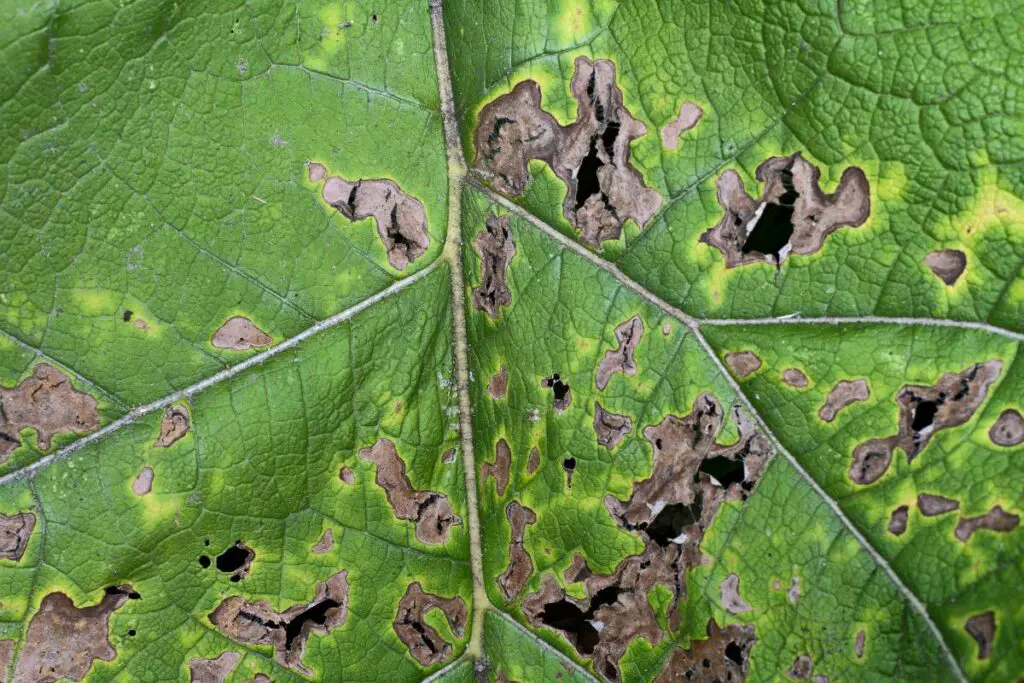
Several diseases can lead to a dying Zucchini plant. Let’s have a look at them:
Bacterial wilt in Zucchini
Suddenly, the Zucchini plant will wilt.
It is a primary sign of the disease.
Unfortunately, there is no cure.
If your plant is infected, isolate and remove it to prevent spreading.
The best way to manage the disease is to control the cucumber beetle population.
These bugs carry and spread the disease.
Keep checking your Zucchini plant.
If you find any small, green-yellow-black bugs with spots or stripes or egg clusters, remove them immediately.
Spray some insecticides around.
Alternaria Leaf Blight
The disease is caused by a fungus that thrives in hot and humid weather.
Some disease symptoms are brown or yellow spots on the leaves with light green or yellow halos.
Over time, these spots will merge and expand, taking up all the leaf surface and making your Zucchini plant wither and die.
If the disease has not spread much, isolate the plant, trim the affected leaves, and start caring for it.
See if you find any progress.
If there isn’t any progress, it has gone beyond saving.
You have to dispose of the plant.
Avoid overhead watering.
Consider watering the Zucchini plants at the base to reduce the moisture from gathering on the leaves.
Ensure that the plant receives good sunlight and air circulation.
Keep the surroundings clean.
Practice crop rotation to destroy the spore population and reduce the chances of blight from spreading.
Bacterial Leaf Spot
Hot and humid summer conditions are ideal for this disease.
It is caused by the bacteria Xanthomonas campestris.
Prevention is the best key to saving your Zucchini plant.
Check for signs of nutrient deficiencies.
The symptoms can be similar.
Check for small speckled dots with yellow margins on the leaves for differentiating.
Treating the plant can be difficult.
Apply some copper sprays on the infected leaves to avoid spreading, and wait for some weeks to check for any progress.
Heavily infected plants cannot be saved.
For prevention:
- Avoid damaging the stems and leaves. They get into the plant through the open wounds.
- Buy disease-free seeds from a reputable company.
- Consider crop rotation every 2-3 years.
Blossom End Rot
It is not really a disease.
The end of the fruit rots and looks like an infection.
A lack of bioavailable calcium in the soil and erratic watering causes the problem.
The problem will not necessarily kill your Zucchini but can leave it prone to pests and diseases.
Once you find a fruit rotting in the end, remove it immediately from the plant and improve watering practices.
To prevent spreading, use fertilizers containing ground oyster shells, crushed eggshells, dolomite lime, and gypsum.
You can also try Down to Earth Organic Approved Oyster Shell Fertilizer.
The soil should neither be too dry nor too wet.
Mulch the soil to keep the soil from drying out frequently.
Cucumber mosaic virus
Cucumbers are cousins to Zucchinis, which makes the latter prone to the disease.
The pathogens spread through the pests or contaminated gardening tools.
You will notice curling and a mosaic-like pattern on the Zucchini leaves.
Over time, the disease can stunt the Zucchini growth, reduce yields, and kill the plant.
You cannot get rid of the disease completely.
To bring your plant back to life, eliminate the aphids initially.
Make a solution of 1½ teaspoon of neem oil, ½ teaspoon of dish soap, and ¼ parts of water. Spray it on the infected areas.
For prevention, check on pests and try to deter them.
Buy CMV-resistant cucumber varieties, like Green Machine, Yellow Fin, and Desert.
Sanitize your gardening tools before and after use.
Keep the surroundings clean and add companions like garlic, onions, or potent fragrant companions to limit the visit of pests.
Powdery mildew in Zucchini
A humid climate, wet soil, and lack of air circulation invite the disease.
Initially, you will notice white powdery dust progressing to the stems.
But once it has spread, the leaves will turn yellow.
Slowly, all the leaves will get affected, and your plant will die.
Fortunately, you can save your plant from dying because powdery mildew is less severe than other diseases.
But quick action is mandatory.
Remove infected leaves and spray neem oil.
Progress will follow after a few weeks.
Grow PM-resistant varieties like Dunga, Sunglo, and Success PM.
Avoid overhead watering to reduce moisture accumulation on the leaves.
Ensure to maintain at least 2-3 feet of space between each plant for sufficient air circulation.
It will prevent the spores from quickly spreading.
Septoria Leaf Spot
Septoria Cucurbitacearum is a foliar pathogen that can affect all the cucurbit families, including Zucchini.
The pathogen loves humid and warm weather, around 60°F in spring and fall.
You will find round white spots with dark margins on the leaves.
If left unchecked, your plant will die.
Thankfully, you can save the dying Zucchini if the infection is less.
Remove the leaves and use potassium bicarbonate or organic copper fungicide.
Prevention is the best way out.
So, remove the old crop remains from your garden and practice crop rotation every 2-3 years.
Provide good airflow and plant Zucchini away from tomatoes.
Zucchini plants dying due to the lack of sunlight
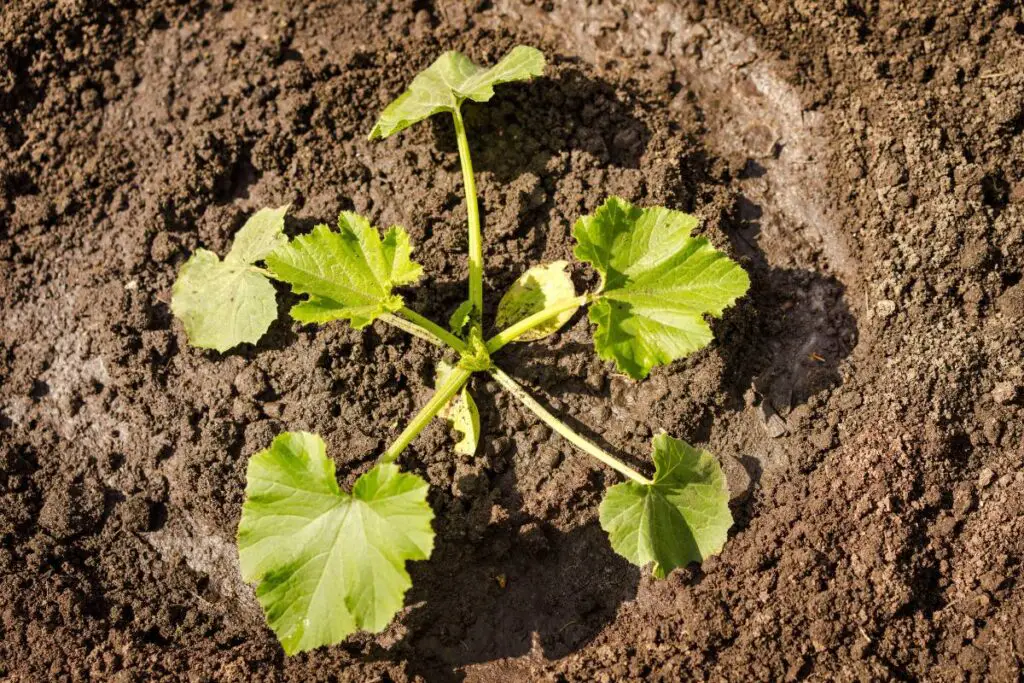
Growing the Zucchini in a location with insufficient sunlight can harm the plant’s health.
Low light levels from prolonged periods can lead to poor growth and pollination.
The plant will become tall and leggy while trying to reach for some sunlight.
The leaves will be pale, and the plant will produce little fruits.
The soil will not dry out, leading to several issues; overwatering is the most common.
As time passes, your Zucchini will die.
Zucchini plant sunlight requirements
Plant the Zucchinis in a location that receives 6-8 hours of sunlight daily.
If your Zucchini plant is dying from low light, ensure it receives 6-8 hours of sunlight.
You can transplant it to a different location or use outdoor Grow lights to give them the missing light.
Once your Zucchini plant starts showing signs of improvement, it will become healthy within a few weeks.
Keep providing adequate light and other requirements.
Avoid any further stress.
Saving the Zucchini plant from nutrient deficiency
Zucchinis will need a proper nutrient balance to survive well.
But soil alone cannot provide all the nutrients.
You have to fertilize your Zucchini separately.
Lack of nutrition will not kill your plant as fast as the abovementioned issues.
Your Zucchini may seem like it is surviving, but you won’t witness any fruit growth.
The leaves are the first to show signs of nutrient deficiency.
You will see discolored leaves or small leaves.
As time goes by, your plant will become weak and die.
Nutrient management and soil care for Zucchini plants
Add organic matter to the soil before planting and start fertilizing when the plant reaches 6-8 inches tall.
The organic matter does the job of fertilization for the first few weeks.
But over time, the nutrients will deplete with daily watering.
That’s why you need to fertilize the plant separately.
Use a balanced liquid fertilizer.
If the leaves are discolored and small, recall the last time you fertilized your plant. If it has been too long, start fertilizing.
Begin with adding some organic matter.
Once you find progress in the plant, start fertilizing with a liquid fertilizer after a few weeks.
Fertilize the Zucchinis every 2-3 weeks for 8 weeks. Again, fertilize them when the plant starts blooming to encourage fruit production.
Zucchini plant dying due to Overcrowding
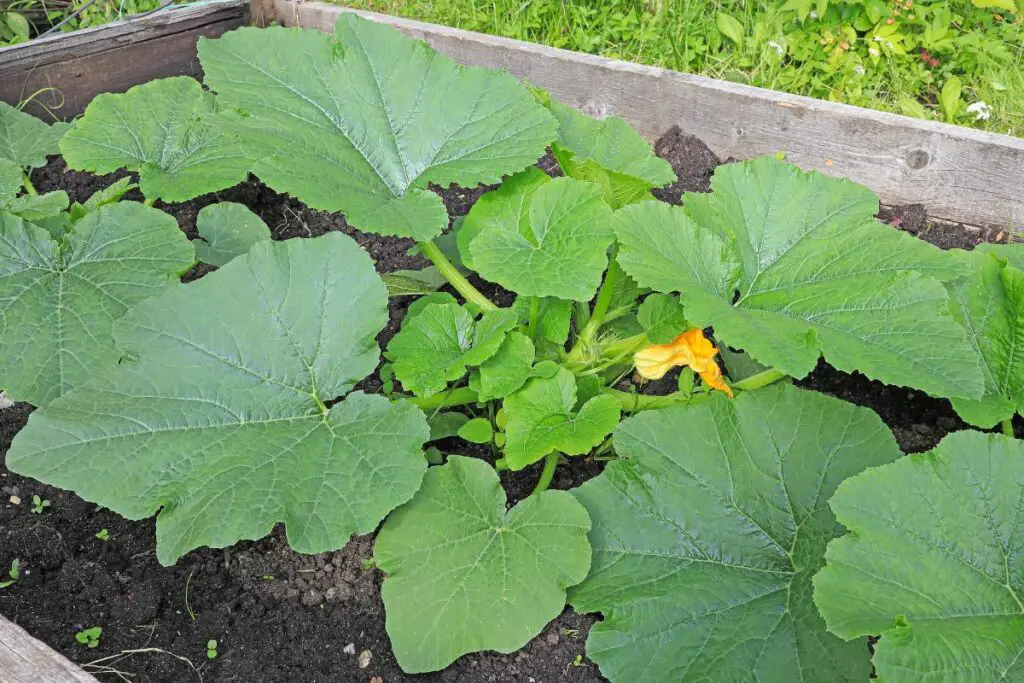
Many people are unaware of this issue, but it is true sometimes.
Zucchinis grow huge leaves, and the roots spread enough.
So, they need enough space.
When you plant the Zucchinis too close, they get overcrowded.
The leaves grow close to each other and lack enough airflow, further encouraging several diseases, powdery mildew being the common one.
With overcrowding and close planting, the roots underground will also fight for moisture and nutrients constantly.
Zucchini plants, when overcrowded, become stressed and may eventually die due to this.
Rescuing a dying Zucchini plant due to overcrowding
In such cases, the best way out is prevention. You must maintain a 2-3 feet distance between each Zucchini.
If you have already planted them close to each other, you have to transplant them again.
It can be tricky as Zucchini does not encourage root disturbance when actively growing. It can further cause transplant shock.
However, there is no other option than to transplant them to a new location and maintain proper distance to avoid such issues.
Zucchini plant dying due to Temperature extremes
Zucchini plants are sensitive to extreme temperatures, especially cold temperatures.
Zucchinis will die when exposed to temperatures below 50°F for prolonged periods.
Some cold-tolerant Zucchinis can tolerate up to 32°F; the plant cells and tissues will get damaged below this.
Ultimately, your plant will receive frost damage and die.
The same is true with the hot temperatures.
Temperatures above 90°F will lead to heat stress, resulting in wilting, leaf burns, and flower drops.
Additionally, the soil becomes rigid and compact.
Zucchini plant temperature: Preventing frost damage and heat stress
Zucchini do best at temperatures ranging between 70-90°F.
If the plant suffers from heat stress, increase watering, provide shade with shading cloth, and add a layer of mulch to trap moisture.
If the plant suffers from frost damage, install row covers or frost blankets, add a layer of mulch, and add some outdoor lights to provide some warmth.
In the morning, remove the frost cover if sunlight hits your garden.
This will keep the plant warm.
In colder regions, consider growing Zucchini in pots so you can bring them indoors before frost.
Zucchini plant dying due to Improper pruning
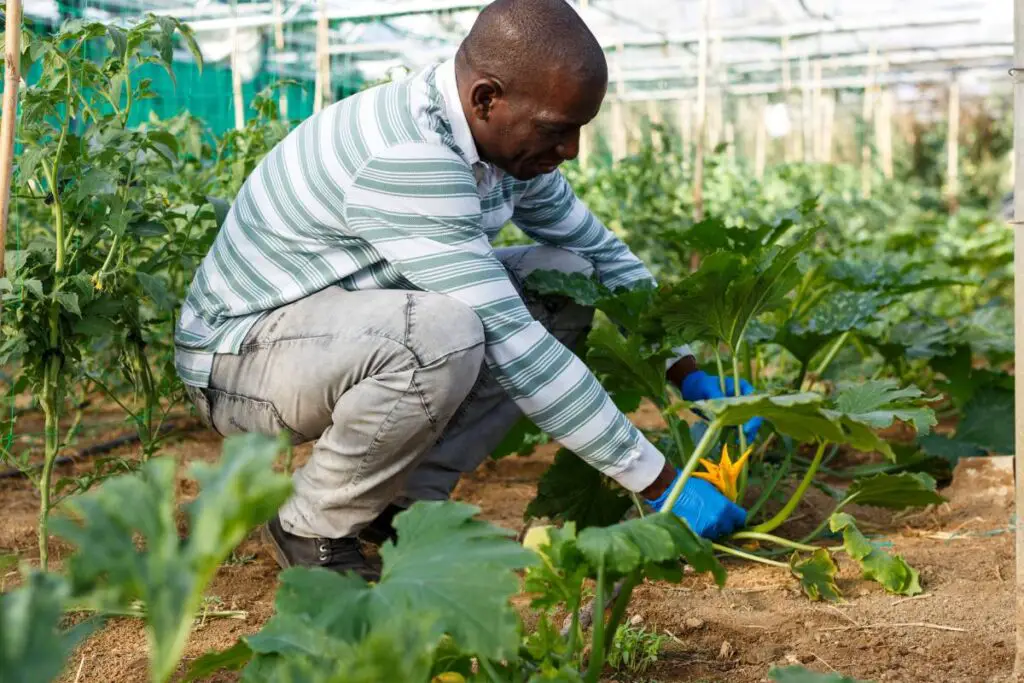
Zucchini leaves can grow very big and spread very quickly.
So, pruning is an essential part of care and maintenance.
Improper pruning is a common mistake made by beginners.
They don’t know the correct pruning techniques.
Pruning makes a plant healthy.
Not pruning can lead to overcrowding, lack of airflow, and diseases.
Over time, these will contribute to Zucchini’s death.
Too much pruning can also kill the Zucchini plant.
It weakens the plant so much that it fails to return despite proper care.
Zucchini plant pruning techniques
You need to prune a few outer leaves and the damaged, dead, and discolored leaves and flowers.
It improves air circulation, reduces the chances of diseases, and keeps your Zucchini healthy.
Pruning the dead and damaged foliage and flowers will allow your plant to focus on new growth instead of wasting energy on these dead leaves and flowers.
Ensure to prune the plant when the Zucchini grows actively during the spring and summer.
Since it is Zucchini’s growing season, it can heal faster and grow new leaves.
Zucchini plant dying due to lack of pollination
For reproducing, the Zucchini plants will need pollination.
Without this, your plant will produce fewer fruits and die after a point.
Zucchinis use a lot of energy to produce flowers and fruits.
When your Zucchini does not produce fruit, it can stress the plant too much.
Zucchini will continue using its energy and valuable resources to produce fruits and flowers.
But lack of fruits will wither and kill the plant.
The culprit is an area with less pollinator count or usage of pesticides in the garden.
How to pollinate Zucchini plants?
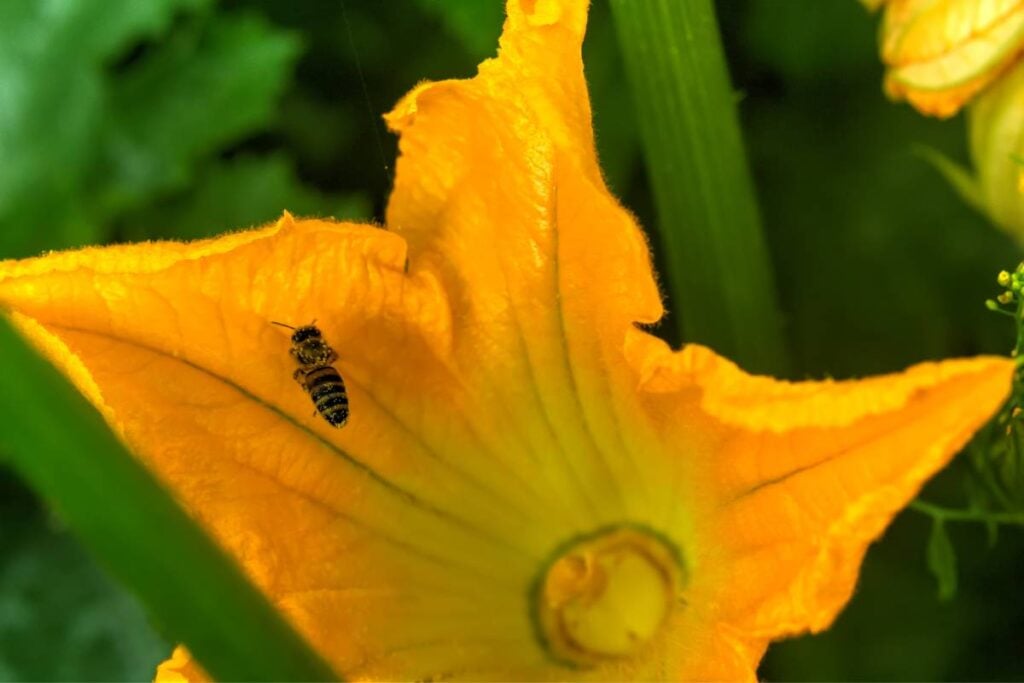
The only solution is hand-pollination.
But how to hand-pollinate Zucchini?
Here’s how:
- Identify the male and female flowers of your Zucchini plant.
- Use a cotton swab or a paintbrush and take the pollen from the male flower. It will be sticky.
- Now, carry the brush or cotton swab and brush it into the female flowers to let the pollen drop.
Cover your female flowers with plastic to avoid cross-pollination until you observe any fruit growth.
To encourage natural Zucchini pollination methods, try increasing the pollinator count by planting flowering plants, for example, nasturtiums, marigolds, and sunflowers.
Plant your Zucchinis in a place with more bee activity.
Also, ensure the location receives adequate sunlight and is saved from extreme weather conditions.
Extreme weather conditions can also reduce pollinator activity.
If so, you cannot depend on the natural methods.
Zucchini plant dying due to inappropriate fertilization
Proper nutrition is essential for Zucchini plants.
But, overfertilization can be detrimental to Zucchini.
That will kill the plant faster than nutrient deficiency.
While over-fertilized, the salt from the fertilizers will gather on the soil surface.
Zucchini will struggle to uptake the nutrients and moisture.
As time passes, the plant will become very weak.
These buildup salts can also burn the roots and damage them.
Once this happens, the plant will slowly start dying.
Zucchini plant fertilization
If you have already over-fertilized, stop fertilizing and flush the soil with water.
It can remove the salt buildup and help your plant to revive.
Don’t fertilize until you see signs of revival.
If you have added organic matter and fertilizer while preparing the soil, don’t fertilize immediately.
The organic matter will help with nutrition for a few weeks.
Start fertilizing only when the plant develops after reaching 6-8 inches tall.
Use a balanced fertilizer with an NPK ratio of 10-10-10 every 2-3 weeks.
There are other NPK options, too. Use a 10-5-5 fertilizer to encourage vegetative growth and 6-18-6 during the flowering stage to encourage flowers.
If you are a beginner, I suggest a 10-10-10 fertilizer.
Also, don’t forget to dilute the fertilizer with water.
It reduces the concentration and the chances of fertilizer burns.
Zucchini plant dying due to Weed competition
While planting the Zucchini, remove the weeds from around the Zucchini.
Continue this in the future.
Weeds can take up all the nutrients and moisture you provide to the Zucchinis.
As a result, your Zucchini plant will struggle and fight for resources and can end up dying.
Zucchini plants are not immediately affected; they will succumb to the problem and die over time.
Helping revive a dying Zucchini due to weeds
If your Zucchini plant stops growing, act immediately by removing surrounding weeds to reduce stress and encourage growth.
Once you find new growth in the Zucchini after constant weed removal, you have saved the dying Zucchini and given it a new life.
Zucchini plant dying due to Drought stress
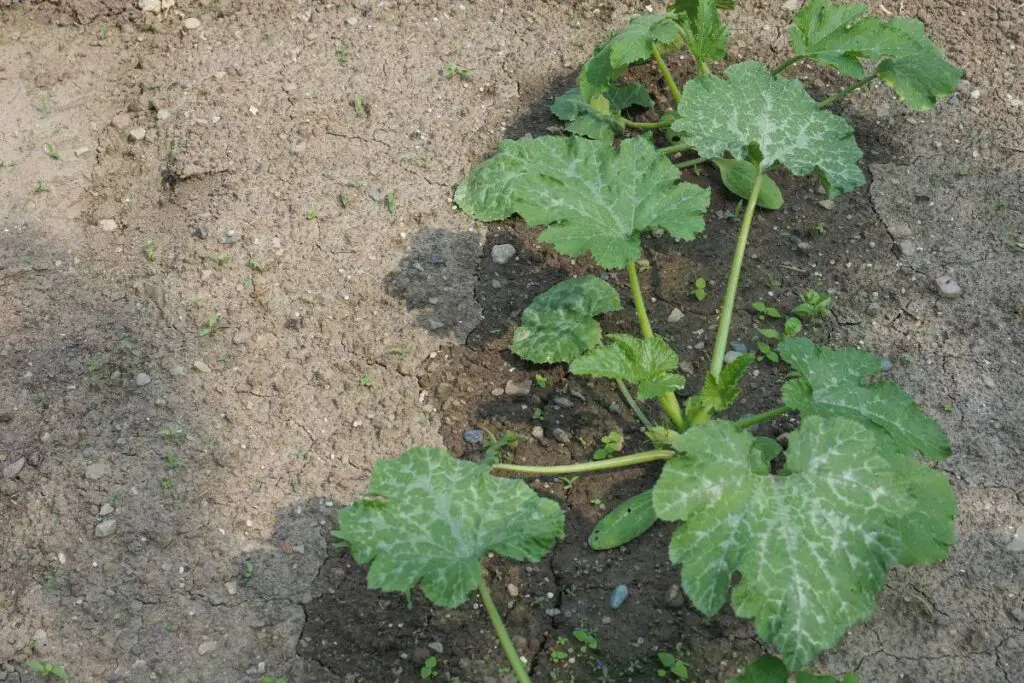
Zucchini does not enjoy being overwatered.
At the same time, they won’t enjoy drought conditions too.
Zucchini loves evenly moist soil.
You can skip 1-2 waterings, but keeping your Zucchini plant dehydrated for prolonged periods can kill your plant.
Since the plant receives 6-8 hours of sunlight, underwatering worsens the condition.
Zucchini plant underwatering symptoms:
- Zucchini leaves yellowing
- Zucchini leaves drying and curling
- Zucchini leaves browning at the tips and edges
- The zucchini plant is not growing
Zucchini plant watering tips
If it feels dry, water your plant immediately.
Zucchini loves deep and infrequent watering.
Checking the moisture level before watering is the best way to understand when to water the plant.
Do this regularly to avoid Zucchini watering issues.
Add a thick layer of mulch.
It will prevent evaporation and keep the soil moist for a long time.
If the soil feels hard, use a fork or chopstick to aerate the soil and let the water enter the soil.
Care and maintenance to save the Zucchini plant
You should care for and maintain your Zucchini plant well to prevent it from dying.
I have been growing Zucchini plants for a very long time.
Throughout my journey, I have got some fantastic Zucchinis.
I have also lost some.
I have learned several tips and tricks to keep the Zucchinis safe and healthy in the long run.
Based on my experience, I am sharing with you some essential care tips and preventive measures for the Zucchinis that can keep your plant healthy and prevent them from dying:
- Let the Zucchini plants have 6-8 hours of sunlight regularly.
- Water the Zucchini plant when the top few inches have dried. Zucchini loves deep but infrequent watering and evenly moist soil.
- Avoid overhead watering. Always water the plant at the base. The leaves should not stay wet for too long as that’s what causes a lot of diseases.
- Add organic matter to the soil to improve nutrition, drainage, and retention.
- Fertilize the Zucchinis every 2-3 weeks after they have reached a few inches tall post-planting. Don’t over-fertilize.
- Protect your Zucchini plant from extreme temperatures. The ideal temperature is 70-90°F. When the temperature crosses 90-95°F, install shading cloth, increase watering, and mulch the soil. When temperatures go below 50°F, cover the plant with frost and row covers to prevent frost damage. Apply mulch, and keep lights near the Zucchini to warm up the plant.
- Plant your Zucchini plant at a location with high pollinator activities. If there is a low pollinator count, consider hand pollination.
- Clear the weeds from around your plant to avoid competition. Keep the surroundings clean.
- Always sanitize your gardening tools before and after use.
- Dispose of the infected and trimmed leaves in the garbage; do not use them in compost..
- Check out for pests and diseases and take immediate action to prevent the infestation from spreading.
- Plant companions such as sunflowers, lavender, dill, marigolds, nasturtiums, and garlic. These plants can deter pests.
- Grow disease-resistant Zucchini varieties and consider crop rotation every 2-3 years.
Final thoughts
Zucchini plants can die due to several reasons. However, improper watering, lack of sunlight, nutrient deficiency, and pests and diseases are common. Ensure Zucchinis have adequate sunlight, watering, nutrients, and fertilization.
Check out for pests and diseases and immediately treat your dying Zucchini plant. Whenever you find the plant is struggling to live, it means something is wrong, and it is slowly killing the plant.
Find the exact cause, and treat for the same. With proper care and maintenance, your plant will recover. Follow the care tips I have shared for optimal growth and to witness many fruits.
Will my Zucchini plant die due to lack of support?
The heavyweight fruits can bend the plant towards the ground. Any breakage and open wounds can invite several pests and diseases, leading to the plant’s death. So Zucchini would appreciate some support.
Will Zucchini survive if roots get hurt due to physical damage?
Roots are what keep the plants alive. If roots are badly damaged, you cannot save the plant. Survival is only possible if the damage is less than 30-40%.
Reference: Zucchini Wikipedia
